Support us
As a charity we rely on your donations to fund our free exhibitions, school activities and online resources
Empowering medical excellence, shaping healthcare futures.
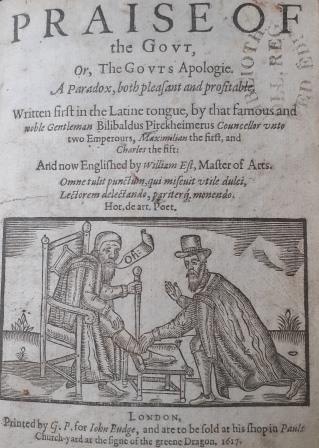
This rare volume was translated into English by William Est from the 1522 Latin original by Williband Pirckheimer. Pirckheimer was a German humanist scholar who suffered from gout. He took some pride in his suffering, considering it a proof of his scholarly lifestyle. He had earlier written: “The doctors claim that my excessive studying is the cause of my ailment. However, for what does one live when one may not study?” Several years later he wrote this satire which was modelled on Erasmus’ The Praise of Folly. It is told by a person, Dame Podagra (gout) whose conclusion is that the disease is painful and bad for the human flesh, but that it can also be seen as good to the human spirit if it changes bad habits.
Baillou (also known as Ballonius) was the first physician who pointed out the differences between gout and rheumatism. “Gout is a disease of a certain part, and periodical; rheumatism, of the whole body, and more uncertain in its attack. What gout is in any limb, exactly so is rheumatism in the whole body, as regards pain, tension and the sensation of burning heat.” Ballonius thought the disease was caused by impure blood and advised blood-letting as the most efficient treatment.
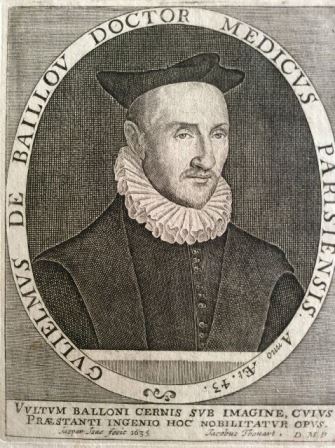
Ballonius was a court physician in Paris and little known to the outside world until his book was published posthumously, in 1642, by his nephew. Today he is considered the father of rheumatology.
Bathing in warm water was used to alleviate pain in rheumatism from earliest times. It was prescribed by doctors in ancient Egypt, Greece and Rome, and physicians in the Middle Ages continued to recommend spa treatments. Visiting spas became very popular in Britain in the 18th century for rheumatic patients. In the 19th century spas opened across Europe and other physical therapies were added to the original regimes of the bathing and “taking the waters”.
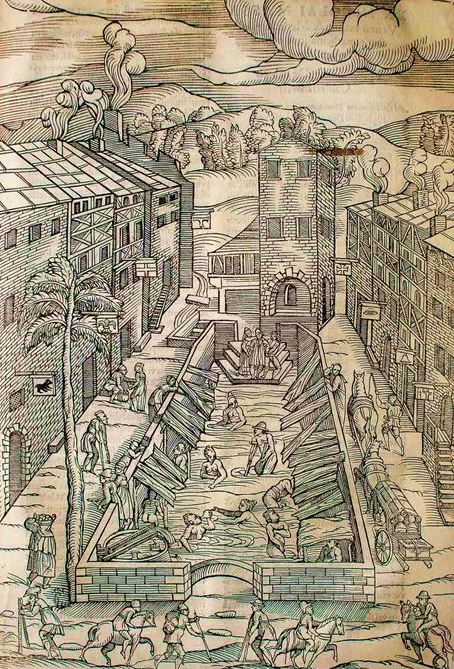
This collection of treatises, published in Venice in 1553, is the first authoritative publication on the subject. The illustration shows a spa in Plombières which had been used to treat patients with arthritis and gout since the Roman times.
Robert Adams, a Dublin surgeon and anatomist is remembered today mainly for his description of heart block (eponymous Stokes-Adams syndrome). In his own lifetime he was better known for his Treatise on Rheumatic Gout, or Chronic Rheumatic Arthritis of all the Joints, published in 1857. In the same year he published this atlas to accompany the treatise, Illustrations of the effects of rheumatic gout, or chronic rheumatic arthritis. These 2 publications established rheumatic arthritis as a specific disease separate from gout.
The ‘Tallerman treatment’ for rheumatic problems was available in hospitals across London and elsewhere in the UK in the late 19th century.
Lewis Tallerman was a London-born businessman with no medical or scientific background. In 1894 he developed and patented the ‘Tallerman Hot-Air Treatment of Disease’ which involved treating ‘rheumatic-gout’ type ailments with superheated air. The treatment was tested successfully at St Bartholomew’s Hospital and then taken up by most London hospitals. From there it spread to Paris, Berlin, Baden-Baden and Philadelphia.
Tallerman set up free institutions in deprived areas of London, and later in Lowestoft and Stockholm, for the treatment of the sick and disabled poor patients.
The first paper on the Tallerman treatment appeared in the Lancet 1895. It was reported that in a trial in London “there was not a single failure” when treating cases of sprains, gout, rheumatoid arthritis and a tuberculous knee joint. Patients’ limbs were placed into a gas-heated copper cylinder and supported to keep away from the casing, while the air inside was gradually heated up, usually to 150° C. This normally worked by greatly reducing pain and so encouraging normal movement.
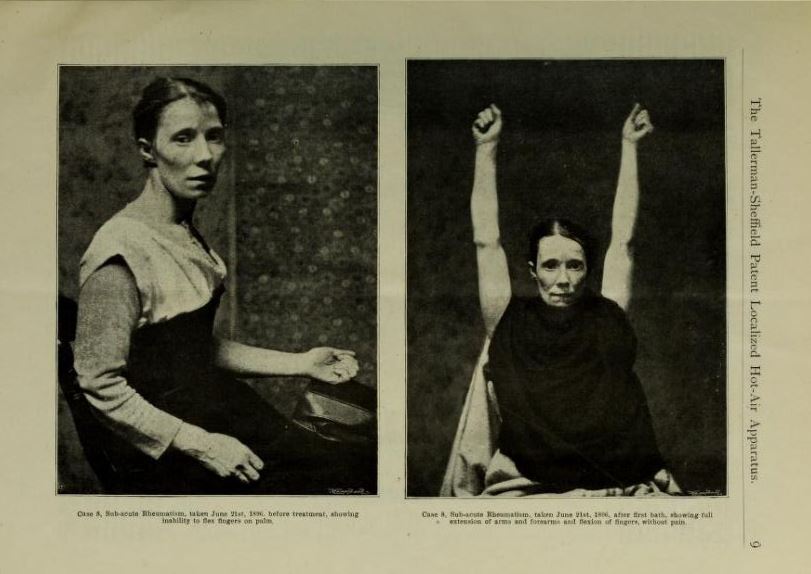
This paper in the Lancet 1896 includes illustrations which later appeared in the 1898 book on the Tallerman treatment. It was a case report of a patient with sciatica of 7 month duration. According to the author, the patient’s movement returned to normal and was pain-free after just 3 treatments.
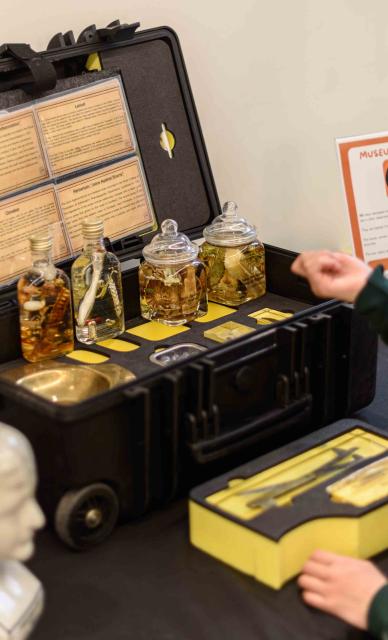
Support us
As a charity we rely on your donations to fund our free exhibitions, school activities and online resources